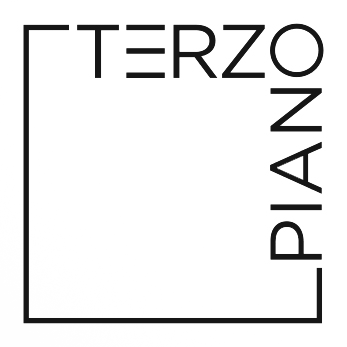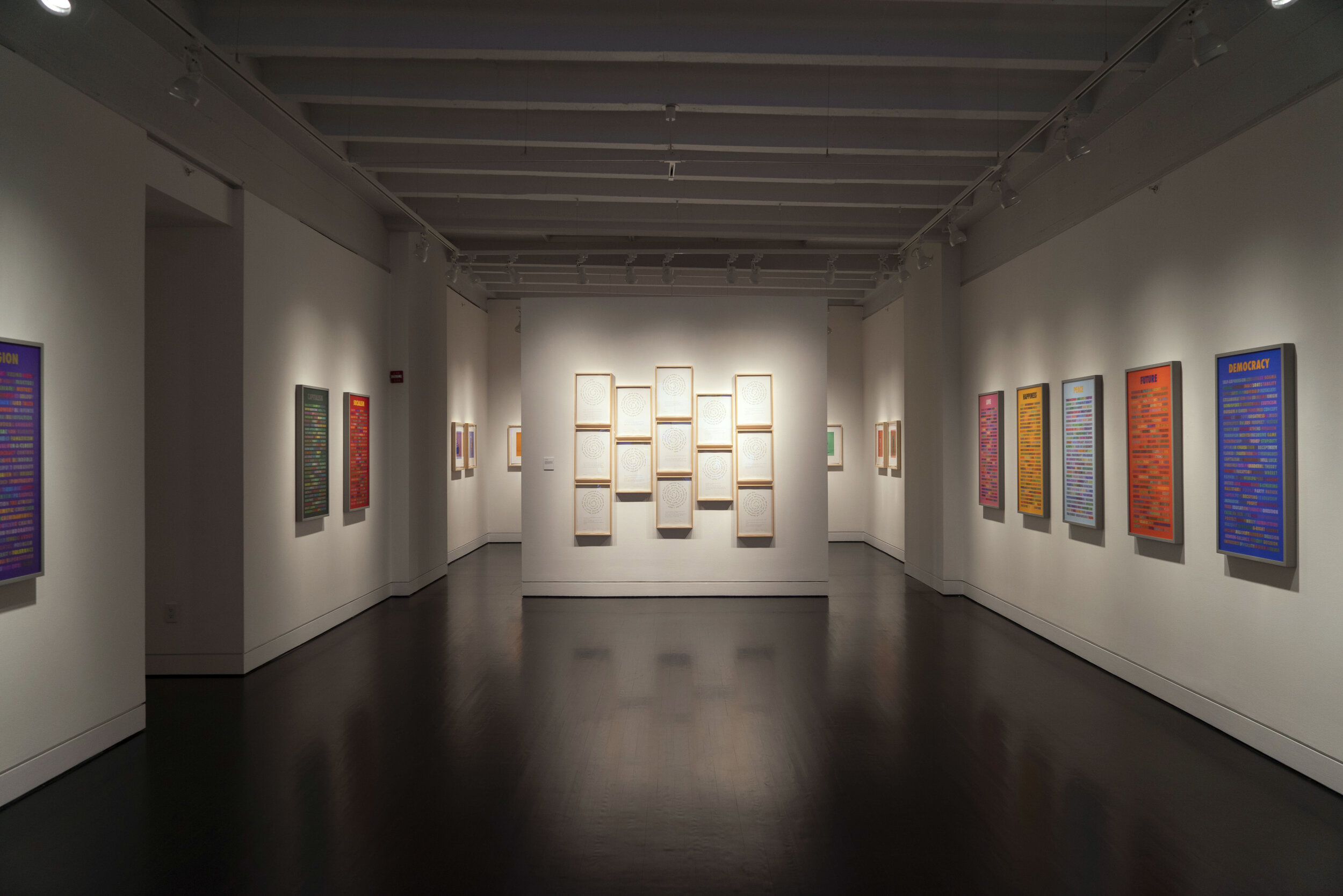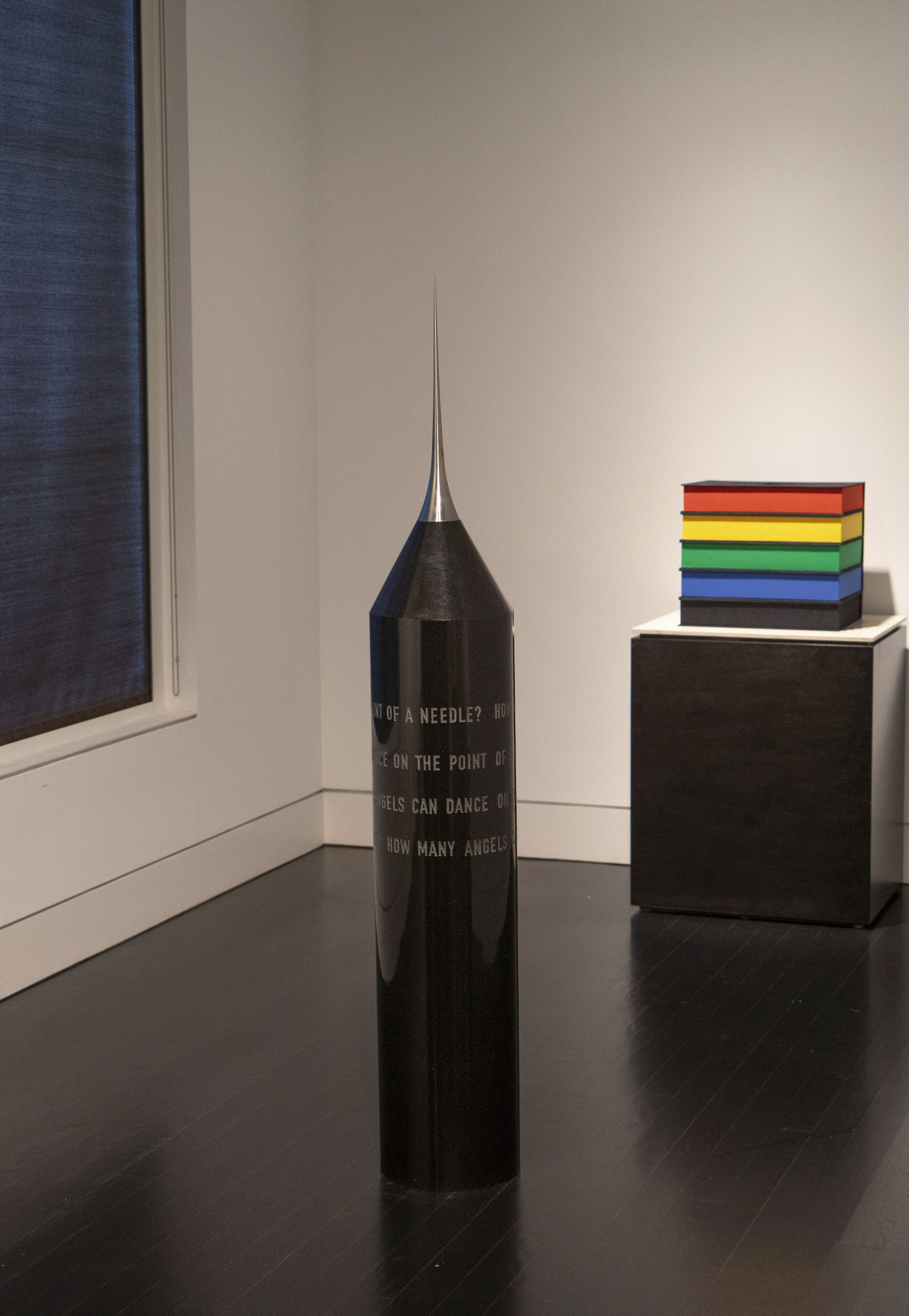Brian Dailey
Giving Voice
May 18th - July 3rd, 2021
Giving Voice | Brian Dailey
By Andrea Pollan
This exhibition of American conceptual artist Brian Dailey’s work brings together but a sampling of this artist’s protean curiosity and creativity from 2010 to the present. Dailey started as an artist in the fertile 1970s Los Angeles art scene at a time of cultural and political uprising. He earned a MFA from the Otis Art Institute focusing on diverse media such as painting, sculpture, installation, and performance. Against the background of the Vietnam war, politics fueled discussions amongst L.A. artists and writers. Dailey had already conceived a performative installation about government surveillance, Closely Watched (1975). It presented, within a controlled and minimalist sculptural installation, a chicken living in a cage while being monitored by a video camera as a black and white monitor presented the simultaneous footage. The viewer became complicit with the camera as both participatory viewer and spy.
This performative element between artist, art and viewer has become a hallmark of his œuvre.
His evolving concern about the dangers of war in general and nuclear war in particular during this heightened period of the Cold War had Dailey decide to deepen his knowledge, so he pursued a PhD in International Relations at the University of Southern California specializing in diplomatic history, arms control and nuclear deterrence theory. Upon completion in 1987, he then started an extensive career in government and the private sector that exposed him to a broad range of engaging international security issues.
He pivoted back to art full time in 2008 and took maximum advantage of all he had experienced during his extensive global travels and precarious meetings negotiating with global power players. In his greater goals for his work, Dailey admits to the primary influence of conceptual and performance artist Joseph Beuys (1921-86); although their aesthetics and approaches differ considerably, both work in diverse media with activist intentions.1 The German postwar artist aimed to transmute culture through creativity, non-violence and egalitarianism, an aspiration that also characterizes Dailey’s methodology.
The seven bodies of work on view in the gallery present select options from a menu of the artist’s interests. Dailey draws upon his singular background to develop conceptual works that include portraiture, performance, objects, and words; these all convey an overarching theme of how language in all its nuanced forms becomes critical to communication.
The artist works simultaneously on bodies of work ranging from the private to the global. Although all art is autobiography for the artist, the most intimate series, 14 Stations at the Crossroads (2011) pairs photo tableaux of the artist acting within theatrical coded scenes from his life with precise paintings of cruciform-shaped crossroads. Each painting corresponds to a photo, two of which are on view here, and reveals his interest at developing cipher iconography, a personal language deploying objects and color.
Following a trajectory set by Jenny Holzer’s truism works in the 1980s, the two sculptures from Dailey’s Lamentations (2017) merge poetic word fragments with sculptural forms, but his are abstracted from weapons to address theoretical nuclear deterrence issues. Their seductively menacing appearances entice the viewer to come closer and discover meditations on vigilance during this treacherous nuclear age. Thinking the Unthinkable (2017) reveals the commonly accepted logic behind nuclear deterrence strategies. The viewer circles the sculpture dominated by a sphere referencing the plutonium ‘demon core’ that Dailey describes as “the primary nuclear ‘trigger’ used in the design of the modern-day hydrogen bomb.”2 Similarly, How Many Angels Can Dance on the Point of a Needle (2017) provides a platitude that underscores worrisome dialog “among Western nuclear weapons experts about the futility of planning for nuclear war due to the inevitably apocalyptic nature of the outcome.”3 The sharply milled needle creating the point of the missile shape serves as a cautionary icon of absurd endgame strategies.
Dailey uses his considerable writing skills and background in cryptography to create his enigmatic folio of prints, Riddles (2015). In addition to conceiving Shakespearean sounding texts about political problems, he has also designed his own color-coded cipher to encrypt and present them as hypnotic spirals. These shapes require the viewer to slow down and contemplate the sinister poetic propositions from both an aesthetic and linguistic point of view. The artist admits that an early and deep friendship with Los Angeles-based French artist Guy de Cointet, who had a diverse practice incorporating enigmatic phrases, words and nonsense letters into paintings, objects and performances, subconsciously motivated Dailey’s creation of this body of work.
On a broader philosophical plane, Joseph Kosuth, one of the founding figures of Conceptual art in the 1960s, is a formative influence on Dailey as both explore the relationship between word, image and object and the connection between presented language and meaning in art. Yet language can take on many nuanced forms, including the performative, and Dailey pushes this idea into the 21st century by using digital photo and video technology and inviting the public to participate. Body language becomes the key language and viewer perception the reaction. This is nowhere better expressed than in one of his most-celebrated works, America in Color (2010- 12). The colossal photographic undertaking consists of over 1200 full-length portraits of the American people taken across urban and rural regions at a critical moment in the country’s divisive and polarized electoral history. What started as an informal studio project in which the artist asked visitors their political affiliations and then had them pose as they wished in front of color-coded background screens: red for Republican, blue for Democrat, gray for Independent, green for Green Party, and yellow for those who could not or would not vote.
Seeing the potential in this studio experiment, he took the project on the road, traversing over 20,000 miles in the US. While orchestrating the project as a director on site, setting up in public areas and soliciting participants, he fostered trust with the participant and encouraged each willing person to express their identity thereby creating a thought-provoking interaction between artist, camera and performer. Post-production included a thoughtful editing and juxtaposition process guided both by the portraits and the color grounds. The resulting bodies of work include individual portraits, large photo mosaics grouping the portraits, and later, a 66- minute video loop and a book by the same title.
Dailey expands upon the history of important 20th century photographic archive projects such as August Sander’s encyclopedic People of the Twentieth Century (c. 1922 ongoing to 1954) that chronicles German people from all backgrounds and trades in moody black and whites. Sander aimed for this magnum opus to be a “physiognomic image of an age” and a catalogue of “all the characteristics of the universally human.”4 That he grouped these portraits into seven categories shows his own archivist impulse germane to the country’s turbulent history. Dailey, however, imposes no categories other than political affiliation. He uses both contemporary photographic media and aesthetics to achieve his archive, what writer Wendy Grossman has called “a color-coded time capsule” and a “record of social, ethnic, and political diversity of American society in the 21st century.”5 Rather than defining archetypes or separating social classifications, he exposes a democratic homogeneity, partially orchestrated by the way he presents his subjects against stripped down means and partially by their choice of dress. Media, big box retailers, malls and online shopping have mostly undermined unique regional fashions.6 Yet personal expressions layered on top of symbolic political backgrounds create quite a few unexpected results. Dailey effectively exposes our biases and media-cultivated stereotypes as evidenced by public responses of disbelief and humor. At its heart it is a sizable and significant performance he orchestrated at a crucial moment in time.
Dailey then took on an even greater challenge in the notable video-based work Words (2012- 2020). Over seven years he visited 120 countries in every region of the globe and focused on the people his team solicited. Intrigued by how globalization has affected cultures, politics and language, he asked individuals to give a one-word response in their own languages to thirteen nouns such as war, love, capitalism and socialism. This time the artist presents the subjects in front of a national flag of their choosing. Presented as a video tower in the past, here it is presented on two walls using the multiple screen aesthetic established in the 1970s by video artist pioneer Nam June Paik. The solicitation of public input has become an increasingly common feature in select 21st century practices giving voice to universal biases and concerns. For example, in her Women Words project (2016) painter Betty Tompkins sourced audience response of words or brief phrases about women, resulting in an alarming anonymous input of crude and sexual responses that she then transformed into huge array of tiny paintings creating a visual cacophony. With the benefit of video, Dailey can transmit not only word responses but also the physical appearance of the speaker, adding a nuanced layer of individual emotions into public expression.
This video work brought him back to pure language as subject. Concurrently he developed the body of prints, Tous Les Mots (2018), a French word play on both all of the words and all of the worlds. Dailey incorporated every answer of the 3000 individuals from Words. Influenced by the computer aesthetic of word clouds, he superimposed each of the original 13 nouns onto these responses that “were calibrated and scaled to reflect the frequency in which they were articulated.”7 The composite word-grounds give voice to the complexity of international global responses. His most recent mesmerizing body of work, Words on Words (2020) is a further evolution of the Words project and explores the surprising results when responses about a common theme are combined. Dailey inserts his performative self by mischievously combining these words in vibrantly hued lenticular prints. He orchestrates visual movement and depth and the viewer’s need to reposition themselves to create meaning. Word combinations rise and fall away by proximity, optical prioritization and color. No two colors are alike in each panel as the artist uses nuanced degrees of color saturation per word.8 The text groupings change continuously during each viewing allowing an observer to learn something new each time whether playful or admonitory. He acknowledges the influence of Dada free-verse poetics and the avant-garde ideas of French poet Guillaume Apollinaire; for example, his Calligrammes: Poems of Peace and War 1913-16 exploits the visual form, typography and meaning of a verse equally. Yet Dailey gives it a 21st century twist using both crowdsourcing as content and lenticular lenses as medium.
A political artist who eschews flat-footed didactic work, Dailey treads the cautionary ground laid by Francisco Goya, specifically his cautionary The Disasters of War (1810-20). Globalization and technology have made traversing the planet physically and virtually easier, so this Goyaesque impetus has expanded his practice outside of the studio. Redefining the role of a contemporary artist, he gives voice to timely private and public concerns by synthesizing diverse expressions of communication.
- Andrea Pollan
Notes
1 Brian Dailey (artist), in discussion with the author during a studio visit, Woodstock, Virginia, April 20, 2021
2 Brian Dailey, “Lamentations,” http://www.briandaileyart.com/thinking-the-unthinkable
3 Brian Dailey, “Lamentations,” http://www.briandaileyart.com/how-many-angels-can-dance
4 Metropolitan Museum of Art Communications Department. (2004, May 24). “People of the Twentieth Century”: August Sander’s Photographic Portrait of Germany, [press release], Retrieved from https://www.metmuseum.org/press/exhibitions/2004/august-sander-people-of-the-twentieth-century--a- photographic-portrait-of-germany
5 Wendy Grossman, “Coloring the American Electorate,” in America in Color, (New York: OSMOS Books, 2013), p. 10.
6 Wendy Grossman and Brian Dailey, “Woodstock, Virginia 29.03.2013,” interview in America in Color, (New York: OSMOS Books, 2013), p.20.
7 Brian Dailey, “Tous Les Mots,’ http://www.briandaileyart.com/tout-les-mots-2
8 Brian Dailey, in discussion with the author during a studio visit, Woodstock, Virginia, April 20, 2021













